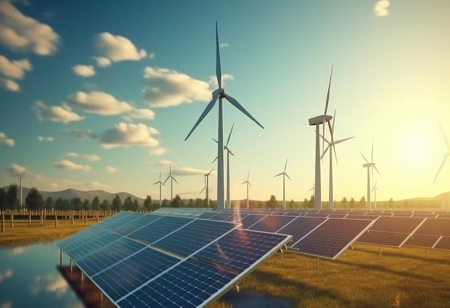
Japanese-based Jera Targets 20GW Renewable Energy Milestone by 2035

 Jera, a prominent Japanese power company, has unveiled plans to establish a subsidiary aimed at spearheading the development of 20 gigawatts (GW) of renewable energy capacity by the year 2035. The newly formed entity, dubbed Jera Nex, will be headquartered in London, United Kingdom. Its primary focus will be on the development, investment, ownership, and operation of various renewable energy assets, encompassing solar, battery storage, and wind technologies.
Jera, a prominent Japanese power company, has unveiled plans to establish a subsidiary aimed at spearheading the development of 20 gigawatts (GW) of renewable energy capacity by the year 2035. The newly formed entity, dubbed Jera Nex, will be headquartered in London, United Kingdom. Its primary focus will be on the development, investment, ownership, and operation of various renewable energy assets, encompassing solar, battery storage, and wind technologies.
Jera Nex will see the transfer of a significant portion of its operational assets and a development pipeline totaling 10GW. These assets, primarily consisting of solar and battery storage facilities, are strategically located across the Middle East, Asia, and North America. Looking ahead, the company aims to expand its portfolio through acquisitions and partnerships, with the goal of scaling up from its current 3GW capacity to 20GW of renewable energy by 2035. Leading this ambitious endeavor, Nathalie Oosterlinck, currently heading global renewables at JERA, will step into the role of CEO at Jera Nex.
Yukio Kani, Global CEO and Chair of JERA said, “We have outlined a vision to reach zero emissions by 2050, and the birth of JERA Nex plays a critical role in our strategic pillars for delivering that ambition. JERA Nex will enable us to draw upon expertise from across the world to develop renewable projects, forge partnerships, and build assets that contribute to a future of decarbonized energy with sustainability, affordability and stability”.
Founded in 2015 through a collaboration between Tokyo Electric Power Group (TEPCO) and the Chubu Electric Power Group, Jera has cemented its position in the energy sector. The Japanese powerhouse has extended its influence beyond borders, including a notable partnership with solar construction firm West Holding Corporation in 2022. This collaboration aims to spearhead the development of 1 gigawatt (GW) of solar photovoltaic (PV) capacity within Japan, spanning the period from 2022 to 2027.

